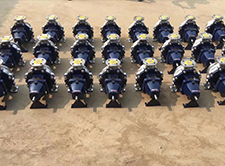English
- Afrikaans
- Albanian
- Amharic
- Arabic
- Armenian
- Azerbaijani
- Basque
- Belarusian
- Bengali
- Bosnian
- Bulgarian
- Catalan
- Cebuano
- Corsican
- Croatian
- Czech
- Danish
- Dutch
- English
- Esperanto
- Estonian
- Finnish
- French
- Frisian
- Galician
- Georgian
- German
- Greek
- Gujarati
- Haitian Creole
- hausa
- hawaiian
- Hebrew
- Hindi
- Miao
- Hungarian
- Icelandic
- igbo
- Indonesian
- irish
- Italian
- Japanese
- Javanese
- Kannada
- kazakh
- Khmer
- Rwandese
- Korean
- Kurdish
- Kyrgyz
- Lao
- Latin
- Latvian
- Lithuanian
- Luxembourgish
- Macedonian
- Malgashi
- Malay
- Malayalam
- Maltese
- Maori
- Marathi
- Mongolian
- Myanmar
- Nepali
- Norwegian
- Norwegian
- Occitan
- Pashto
- Persian
- Polish
- Portuguese
- Punjabi
- Romanian
- Russian
- Samoan
- Scottish Gaelic
- Serbian
- Sesotho
- Shona
- Sindhi
- Sinhala
- Slovak
- Slovenian
- Somali
- Spanish
- Sundanese
- Swahili
- Swedish
- Tagalog
- Tajik
- Tamil
- Tatar
- Telugu
- Thai
- Turkish
- Turkmen
- Ukrainian
- Urdu
- Uighur
- Uzbek
- Vietnamese
- Welsh
- Bantu
- Yiddish
- Yoruba
- Zulu
Telephone: +86 13120555503
Email: frank@cypump.com
Nov . 18, 2024 05:25 Back to list
Deep Industrial Submersible Pump Solutions for Efficient Fluid Management and Resource Extraction
Industrial Submersible Pumps Enhancing Efficiency in Challenging Environments
Industrial submersible pumps play a pivotal role in various sectors, including wastewater management, mining, and construction. These pumps are designed to operate while submerged in liquids, making them ideal for applications where other types of pumps might struggle due to environmental challenges. Understanding the functionality, applications, and advantages of submersible pumps can help industries optimize their operations and ensure efficiency.
At the core of a submersible pump's operation is its unique design, which allows it to be submerged in the fluid it needs to pump. Unlike traditional pumps that require priming and often operate above the liquid surface, submersible pumps rely on a hermetically sealed motor, which is directly connected to the pump body. This configuration prevents the ingress of water and impurities, making it capable of handling various fluids, including those with high solid contents or hazardous materials.
Industrial Submersible Pumps Enhancing Efficiency in Challenging Environments
In the mining industry, submersible pumps are employed for dewatering operations. Groundwater can accumulate in mining pits, posing safety risks and complicating extraction processes. Submersible pumps quickly and efficiently remove excess water, allowing miners to operate safely and continuously. Their durability and reliability under challenging conditions—such as extreme depths and abrasive environments—make them an indispensable tool in modern mining operations.
industrial submersible pump

Construction sites also benefit significantly from submersible pumps, especially when it comes to managing groundwater during excavation. These pumps can rapidly lower the water table, facilitating the construction of foundations and other structures. Furthermore, submersible pumps are often used in well point systems to control groundwater levels and maintain site coziness, which is crucial for long-term stability.
One of the primary advantages of submersible pumps is their energy efficiency. Being located below the surface of the liquid they pump, they utilize hydrostatic pressure to assist in the pumping process, requiring less energy compared to above-ground pumps. This efficiency translates to lower operational costs and reduced environmental impact, making submersible pumps a sustainable choice for industries focused on energy conservation.
Maintenance of submersible pumps is relatively straightforward, thanks to their streamlined design and reliability. However, it is essential for operators to conduct regular inspections to ensure optimal performance. Issues such as wear and tear on seals or impellers can lead to decreased efficiency or pump failure if not addressed promptly.
In conclusion, industrial submersible pumps are indispensable in managing fluids across various sectors. Their robust design, energy efficiency, and ability to handle challenging environments make them a favored choice for wastewater management, mining, and construction applications. As industries continue to innovate and face new challenges, the role of submersible pumps will undoubtedly evolve, further enhancing efficiency and sustainability in fluid management operations.
-
Heavy-Duty Mining Sludge Pumps - Wear-Resistant Slurry Handling
NewsAug.02,2025
-
Horizontal Split Case Pump with GPT-4 Turbo | High Efficiency
NewsAug.01,2025
-
ISG Series Pipeline Pump - Chi Yuan Pumps | High Efficiency, Durable Design
NewsAug.01,2025
-
Advanced Flue Gas Desulfurization Pump with GPT-4 Turbo | Durable & Efficient
NewsJul.31,2025
-
ISG Series Vertical Pipeline Pump - Chi Yuan Pumps | Advanced Hydraulic Design&Durable Construction
NewsJul.31,2025
-
ISG Series Vertical Pipeline Pump - Chi Yuan Pumps | Energy Efficient & Low Noise
NewsJul.31,2025










